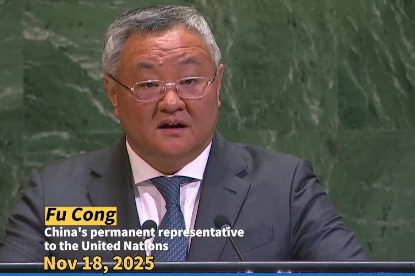US retreat from Paris Agreement comes at a steep cost


For the second time, the United States has exited the Paris Agreement. But this is likely just the beginning, judging from its treatment of the World Health Organization, among others.
The US withdrawal from the Paris Agreement marks the first step in what promises to be a sweeping rollback of not only climate policies, but also cutbacks in environmental regulations. While many hope that the world will move toward clean energy, the reality is that the transition away from fossil fuels will take much longer than anticipated.
The US wants to use vast amounts of cheap energy to fuel its manufacturing resurgence, which it wants to bolster by imposing tariffs on foreign goods. The White House is using tariffs to bring production back to the US, relying on the fact that the country remains the most profligate consumer and hence a vast export market for the rest of the world.
More urgent and critical, however, is the need to sustain the rapidly growing demand for computing power essential to artificial intelligence and data center expansion — an area where the US perceives it still holds a technological edge and must dominate.
The US administration bets that fossil fuels will provide the abundant, reliable energy needed to maintain this competitive advantage to sustain growth of the US economy. Climate change is not even an afterthought for the Trump administration, no matter that extreme weather events have been devastating communities across the US and the world, from record-breaking heat waves to massive storms, floods and wildfires like the recent inferno that engulfed parts of Los Angeles.
The last time the US left the Paris Agreement was in 2017, during Donald Trump's first presidency. That withdrawal was formalized in 2020, but the next administration under Joe Biden reversed the decision upon taking office in 2021, rejoining the accord as part of a broader climate strategy. The brief absence allowed for a swift policy reset, including renewed US climate diplomacy with Beijing, even as Biden sought to curb China's continuing development.
Trump's second-term withdrawal is not just symbolic — it comes with an explicit commitment to prioritizing the expansion of big oil companies, entrenching US' dependence on fossil fuels and dismantling climate-related policies.
Trump signed the executive order Putting America First in International Environmental Agreements to withdraw from the Paris Agreement on Jan 20, and a week later, the US officially notified the United Nations of its departure. The withdrawal will take effect on Jan 27, 2026.
The executive order mandates the immediate cessation of financial contributions to climate-related international funds, the reversal of domestic policies aligned with the Paris Agreement, and the suspension of reporting obligations to the UN on progress in reducing emissions.
To have it both ways, the White House has nevertheless kept the US in the United Nations Framework Convention on Climate Change, the 1992 treaty addressing global climate change.
This means the US can still participate in UN climate negotiations, influencing discussions while opposing policies that clash with the current administration's priorities. To maintain this privilege, the US only has to make a modest financial contribution to the UNFCCC's core budget.
By withdrawing from the Paris Agreement, the US will no longer set or meet emissions reduction targets or contribute to international climate finance mechanisms negotiated over many years to assist poor nations in dealing with climate change.
Moreover, the Trump administration sees climate regulation as a roadblock to economic growth and is aggressively dismantling environmental oversight.
By banking on big oil companies, the White House may end up slowing the US' technological advancement. While the US now sees fossil fuels as the best way to secure cheap energy, the rest of the world, especially China, is prioritizing green energy as the foundation for economic growth, technological advancement and industrial innovation.
China has been heavily investing in clean energy, electric vehicles, batteries, and renewable infrastructure combined with digital technologies, not only to cut emissions and improve efficiency but also to drive economic expansion and develop a highly skilled workforce.
As other nations increasingly commit to green technology and sustainability, China may well become the undisputed leader in the global green and smart economy.
Trump's supporters argue that the Paris Agreement imposes costly regulatory burdens on US industries, hampers economic growth, and compromises US domestic policy autonomy. They claim that withdrawing from the accord frees it from obligations that hold US back.
However, critics argue that US' exit undermines global climate action at a critical moment. They warn that rolling back federal support for renewables will stall the transition to clean energy, hinder innovation, and worsen climate risks.
The US withdrawal from the Paris Agreement, combined with a decisive push for fossil fuel expansion, marks a profound reversal in US climate policy. Unlike the previous departure that was swiftly overturned, this move is part of a broader strategic agenda that could reshape the global energy landscape for years.
Betting on fossil fuels to secure US economic dominance, the White House is making it clear: US' energy future is still fossil fuels. The question remains — but at what cost to the planet's future?
The author is Chief Development Strategist at the Hong Kong University of Science and Technology's Institute for the Environment.
































